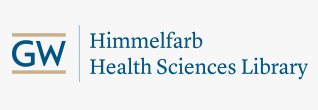Thirty-day outcomes of Asian Americans in endovascular repair of intact infrarenal abdominal aortic aneurysm
Document Type
Journal Article
Publication Date
10-27-2024
Journal
The surgeon : journal of the Royal Colleges of Surgeons of Edinburgh and Ireland
DOI
10.1016/j.surge.2024.10.005
Keywords
AAA; Aneurysm; Asian American; EVAR; Endovascular
Abstract
BACKGROUND: Endovascular aneurysm repair (EVAR) has become the predominant treatment for Abdominal aortic aneurysm (AAA). Racial disparity has been observed in EVAR but Asian Americans have been largely excluded from previous studies. This study aimed to comprehensively evaluate 30-day outcomes of Asian Americans undergoing EVAR for intact infrarenal AAA using a multi-institutional national database. METHODS: Patients who underwent infrarenal EVAR from 2012 to 2022 were identified in the ACS-NSQIP database. Exclusion criteria included age less than 18 years, emergency presentation, and acute intraoperative conversion to open. A 1:3 propensity-score matching was applied to Asian Americans and Caucasians to match their demographics, comorbidities, aneurysm diameter, distant extent of the aneurysm, anesthesia, and concomitant procedures. Thirty-day postoperative outcomes were examined. RESULTS: Among 16,463 patients who underwent EVAR for non-ruptured infrarenal AAA, 302 (1.83 %) were Asian Americans and 12,373 (75.16 %) were Caucasians. Asian Americans had older age and higher burdens of medical comorbidities. After propensity-score matching, Asian American and Caucasian patients had comparable 30-day outcomes including mortality (1.99 % vs 1.34 %, p = 0.42), cardiac complications (2.32 % vs 1.56 %, p = 0.45), pulmonary complications (2.32 % vs 1.89 %, p = 0.64), and renal complications (1.99 % vs 0.89 %, p = 0.13). However, Asian American patients had a longer operative time (155.80 ± 84.59 vs 136.60 ± 69.60 min, p < 0.01) and length of stay (3.60 ± 6.16 vs 2.71 ± 4.50 days, p = 0.01). All other 30-day outcomes were comparable between Asian American and Caucasian patients. CONCLUSION: Asian Americans might be underrepresented in EVAR due to limited healthcare access or a more insidious disease progression. After propensity-score matching, Asian Americans showed similar 30-day outcomes as their Caucasian counterparts. Thus, when given access, EVAR can be as effective and safe for Asian American patients. Future research should investigate the long-term prognosis for Asian Americans after EVAR.
APA Citation
Li, Renxi; Sidawy, Anton; and Nguyen, Bao-Ngoc, "Thirty-day outcomes of Asian Americans in endovascular repair of intact infrarenal abdominal aortic aneurysm" (2024). GW Authored Works. Paper 5769.
https://hsrc.himmelfarb.gwu.edu/gwhpubs/5769
Department
Surgery

